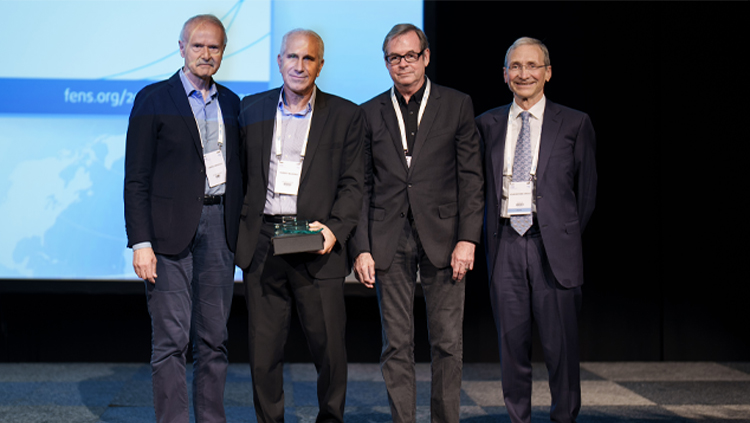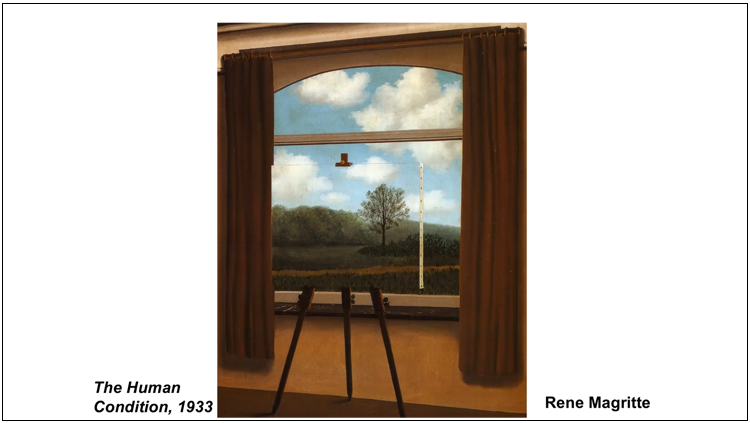Reconnect at Neuroscience 2022 in San Diego
The largest in-person gathering of neuroscientists in the world is back! SfN will convene the global neuroscience community in San Diego, CA, and select sessions virtually November 12–16. Neuroscience 2022 will offer the familiar and irreplaceable in-person poster sessions, lectures, symposia and minisymposia, featured panels, socials, professional development opportunities, the Exhibit Hall, and more.
New programming includes the “SfNova” lecture, which offers the stage of an SfN annual meeting lecture to two rising stars in neuroscience. All lectures at Neuroscience 2022 will feature a Q&A session where audience members can submit and upvote questions via the meeting app, including those viewing lectures remotely. Supplementing the SfN socials, new neuroscience meet-ups will offer self-identified communities an opportunity to connect outside of formal SfN program hours.
For those unable to travel to San Diego, portions of the Neuroscience 2022 in-person programming will be available virtually. The Neuroscience 2022 Virtual Component will include virtual posters, livestreaming of select sessions, and Q&A opportunities. Virtual content will be available to all attendees for one month after the meeting concludes. Registration for the Virtual Component will be half the price of Neuroscience 2022 in-person registration in all member and non-member categories.
Read on to discover some of the headline lectures at Neuroscience 2022.
Presidential Special Lectures
How Do You Feel? The Molecules That Sense Touch
Ardem Patapoutian, PhD
Scripps Research Institute/Howard Hughes Medical Institute
Saturday, November 12, 5:15-6:30 p.m. PDT
Our sense of touch holds the capacity to connect us with the world and warn us of harm and hurt. These senses depend on mechanotransduction, the conversion of pressure into chemical signals. Dr. Patapoutian will discuss work from his laboratory that identified and characterized PIEZO1 and PIEZO2, pressure-activated cation channels. Genetic studies established that PIEZO2 is the principal mechanical transducer for touch, proprioception, baroreception, and bladder stretch, and that PIEZO1 mediates many mechanosensory roles throughout the body.
The Basis of Sleep: What are We Learning From Small Animal Models
Amita Sehgal, PhD
Howard Hughes Medical Institute/Chronobiology and Sleep Institute/Perelman School of Medicine, University of Pennsylvania
Sunday, November 13, 5:15–6:30 p.m. PDT
Studies of sleep have now expanded to diverse species, including invertebrates with very simple nervous systems. Mechanistic analyses in such models have identified molecules that regulate sleep as well as cellular functions served by sleep. Basic principles underlying sleep appear to be conserved across organisms, underscoring the relevance of an evolutionary approach. The lecture will focus largely on advances made in Drosophila and the extent to which these inform our understanding of sleep.
The Neurobiology of Escaping From Predators
Tiago Branco, MD, PhD
UCL Sainsbury Wellcome Centre
Monday, November 14, 5:15–6:30 p.m. PDT
Running away from threat is an ethological behavior that is universal across the animal kingdom. At one end, escape can be a simple reflexive action implemented across a few synaptic connections. At the other, evading predators might rely on coordinating sensory, motor, and memory systems to rapidly navigate to a known safe place. This lecture will discuss the components of escape at the behavior level and highlight how cellular and neural circuit mechanisms work together to implement the underlying computations.
The Macaque Face Patch System: A Turtle's Underbelly for the Brain
Doris Tsao, PhD
University of California, Berkeley/Howard Hughes Medical Institute
Tuesday, November 15, 5:15–6:30 p.m. PDT
Research on the macaque face patch system has given us a remarkable window into the processes underlying visual object perception. This lecture will discuss the anatomy, coding principles, and behavioral role of this system. It will also tell how face patches, together with modern deep networks, reveal a unifying principle for inferotemporal organization in terms of ‘object space’. Finally, the lecture will discuss work exploiting feedback in this system to test if the brain encodes a generative model of reality.
SfNova Lectures
Sunday, November 13, 1:30–2:30 p.m. PST
The Sex- and Cell-Specific Role of TLR4-Induced Pain States: The Communication Between the Nervous and Immune System
Michael D. Burton, PhD
University of Texas at Dallas
The Burton Lab focuses on the conversation between the immune and nervous systems to regulate adaptive behaviors (pain, depression, anxiety, and sickness). Toll-like receptor (TLR)-4 is a pattern recognition receptor that is expressed in several cell types in the immune and nervous systems and mediates various physiological cascades. The lecture will highlight how this protein mediates whole body behavior in a cell and sex-specific fashion with data from multiple groups utilizing pharmacological and genetic approaches.
Multi-Scale Synaptic Analysis for Psychiatric Disorders
Akiko Hayashi-Takagi, MD, PhD
RIKEN Center for Brain Science
Despite the accumulating evidence of synaptophathy in various psychiatric disorders, it is unknown whether synaptopathyis pathogenesis or a secondary consequence. To address this question, we performed a multi-scale synaptic analysis and examined the relationship among synaptic inputs, neuronal computation, and working memory of schizophrenia model mice. Together with the analysis of the postmortem brains of schizophrenia, we offer a new concept for schizophrenia pathomechanism.
Featured Lectures
ALBERT AND ELLEN GRASS LECTURE
Circuits for Body Movements
Silvia Arber, PhD
Biozentrum, University of Basel
Support contributed by: The Grass Foundation
Monday, November 14, 3–4:30 p.m. PST
Movement is the behavioral output of the nervous system. This lecture will focus on recent work elucidating the organization and function of neuronal circuits central to the regulation of distinct forms of body movements, including locomotion and skilled forelimb movements. It will show that dedicated circuit modules in different regions of the brainstem and their interactions within the motor system play key roles in the generation of diverse actions.
DAVID KOPF LECTURE ON NEUROETHICS
Open Neuroscience and the Meaning of FAIR
Maryann E. Martone, PhD
University of California, San Diego
Support contributed by: David Kopf Instruments
Monday, November 14, 10:30–11:30 a.m. PST
Neuroscience is undergoing a revolution as new technologies for data generation combine with data science to understand the brain. The revolution is occurring within a shift towards making open all products of research-articles, data, and code. This lecture will consider the technical, cultural and ethical challenges of open from a fair perspective: as in making our research products Findable, Accessible, Interoperable, and Reusable and in our societal obligations for how and why we must do so.
HISTORY OF NEUROSCIENCE LECTURE
Neuroscience Redefines the Stress Concept: From "Fight or Flight" to Neuroplasticity and Affective Disorders
Huda Akil, PhD
University of Michigan Medical School
Support contributed by: David Kopf Instruments
Tuesday, November 15, 3:30–4:30 p.m. PST
The stress response was originally defined as a “fight or flight response” to an acute stressor. Neuroscience has redefined the concept more broadly as an ongoing, adaptive process of assessing the environment, coping with it, and enabling the individual to anticipate and deal with future challenges. Neuroscientists have identified molecules and neural circuits critical to the stress response and highlighted the impact of stress on neuroplasticity. The evolution of the stress concept and its relevance to affective vulnerability and resilience will be discussed.
PETER AND PATRICIA GRUBER LECTURE
Expanding Horizons in Theoretical and Computational Neuroscience
Larry Abbott, PhD
Columbia University
Emery N. Brown, MD, PhD
Massachusetts Institute of Technology/Massachusetts General Hospital/Harvard Medical School
Terrence Sejnowski, PhD
Salk Institute/University of California, San Diego
Haim Sompolinsky, PhD
Hebrew University of Jerusalem/Harvard University
Support contributed by: The Gruber Foundation
Sunday, November 13, 3–4:30 p.m. PST
A joint presentation of four topics in theoretical/computational neuroscience: How precise is synaptic plasticity? (TS); neural manifolds in sensory, motor, and cognitive systems (HS); transforming sensory and motor information between body and world coordinates (LA); how anesthetics alter conscious processing as studied in humans, non-human primates, rodents, and circuit models (EB).



















